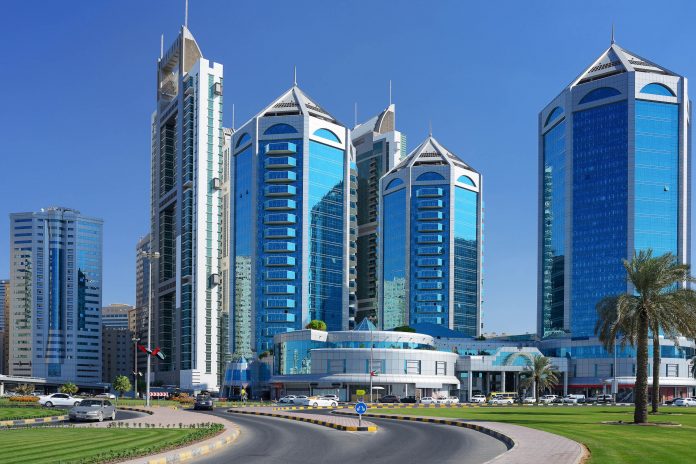Das sittenstrenge Sharjah ist das Emirat der Museen und Märkte und wurde 2014 zur islamischen Kulturhauptstadt erklärt. Hier gibt es keinen Alkohol, dafür reiches kulturelles Erbe, viel Tradition und Geschichte und eine florierende Theaterszene.
Nur 30 Minuten von Dubai entfernt hat das Emirat Sharjah bei Kennern den Ruf, um einiges günstiger als Dubai, aber kaum weniger sehenswert zu sein. Auch hier warten ausgezeichnete Hotels, interessante Museen und historische Bauten, allerdings ohne den aus dem nahen Osten bekannten verschwenderischen Luxus und Größenwahn.
Inhaltsverzeichnis
BILDER: Sharjah Stadt
Urlaub in Sharjah – im Schatten von Dubai?
Der Tourismus wächst auch in Sharjah, im Schatten des berühmten Dubai jedoch eher unspektakulär. Die Hotels sind meist ebenso gut, jedoch um einiges günstiger als in der weltbekannten Metropole. Viele Dubai-Urlauber nutzen das, buchen ihr Hotel in Sharjah und machen Tagesausflüge nach Dubai.
Anstandsregeln „Local Orders“
Unerfahrenen VAE-Reisenden sei gesagt, dass es in Sharjah keinen Tropfen Alkohol zu kaufen gibt und dieser auch nicht öffentlich konsumiert werden darf.
Außerdem herrscht an allen öffentlichen Plätzen strenges Rauchverbot und Knie und Schultern sollten bei Männern und Frauen immer bedeckt sein.
Sharjah schafft es zunehmend, zum attraktiven Urlaubsziel mit lohnenden Sehenswürdigkeiten zu werden. In den letzten Jahren eröffneten im Stadtzentrum und seiner Umgebung zahlreiche Museen und seit 1993 wird die Kunstausstellung Sharjah Biennale veranstaltet. Weitere touristische Highlights sind die Märkte, allen voran der Blue Central Market, die Festung von Sharjah und die an-Nur Moschee.
Sehenswürdigkeiten in Sharjah

Wie auch Ras al-Khaimah Heimat und Besitz der einflussreichen Seefahrer-Familie Al-Quasimi war Sharjah einst eine bedeutende Seemacht mit Ansehen und Wohlstand, bis ihre Städte im 19. Jahrhundert vom britischen Empire vernichtet wurden. Dennoch sind Sharjahs Bauten um einiges älter als die von Dubai oder Abu Dhabi. Doch auch hier wird an allen Ecken und Enden fleißig neu gebaut und Hochhäuser schießen fast wie Pilze aus dem Wüstenboden.
Sharjah ist vor allem das Emirat der Märkte und Museen, sowie der Fachschulen und Universitäten. 1998 wurde Sharjah von der UNESCO der Titel „Arab World’s Cultural Capital“ verliehen.
Auch die Organization of Islamic Conference erklärte Sharjah-Stadt zur „Hauptstadt islamischer Kultur 2014“. Die Art Area und Heritage Area trugen einen wesentlichen Teil zu dieser Auszeichnung bei. Das gewaltige, 42m hohe Granitdenkmal mit 28 Koranversen, 12 Säulen und einer goldenen Kuppel wurde zum Gedenken an diese Ernennung aufgestellt.
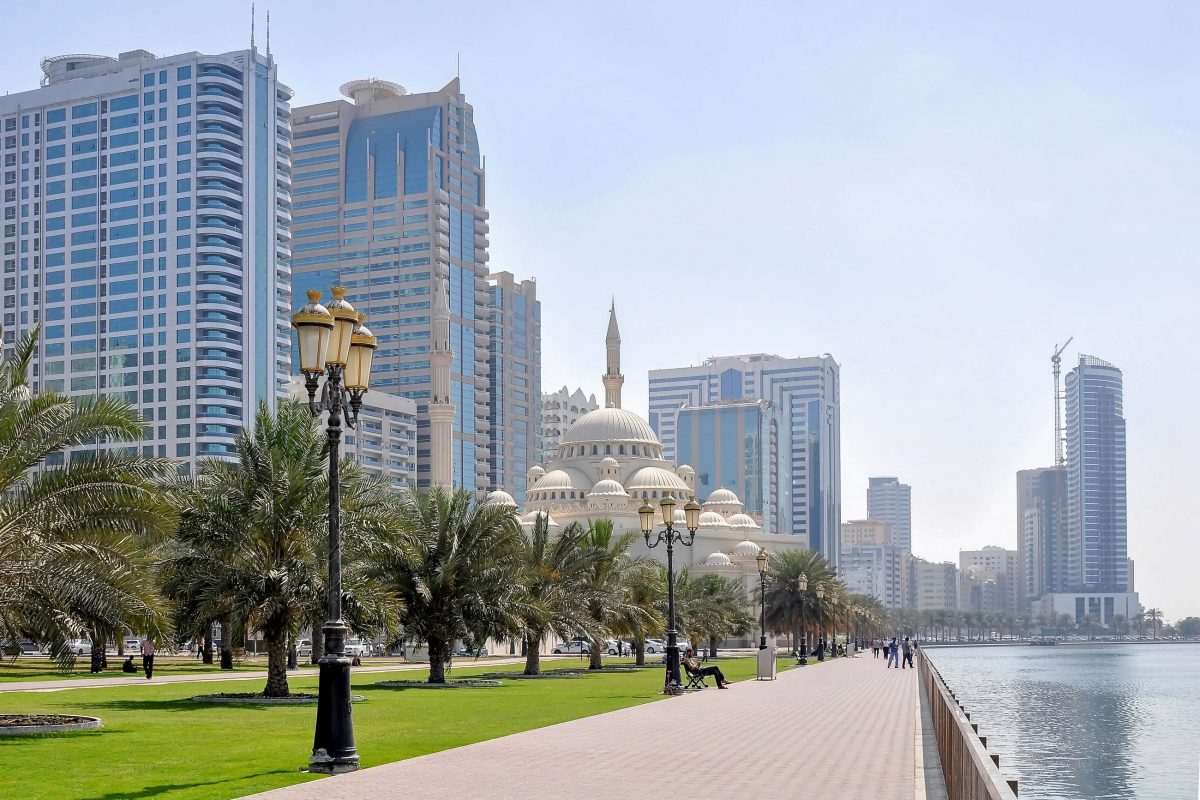
Die schönste Region zum Flanieren und Bummeln ist die Gegend um die Al Khaleed Lagune bis zur Al-Khan Lagune, die die Grenze zu Dubai bildet. Hier sind, ebenso wie an der Corniche, die meisten Sehenswürdigkeiten von Sharjah zu finden.
Tipp: An 9 Nächten im Februar findet das Sharjah Light Festival statt, im Zuge dessen Illuminations-Künstler markante Bauten mit einer atemberaubenden Licht-Show in Szene setzen.
Corniche – Strand und Hotels von Sharjah
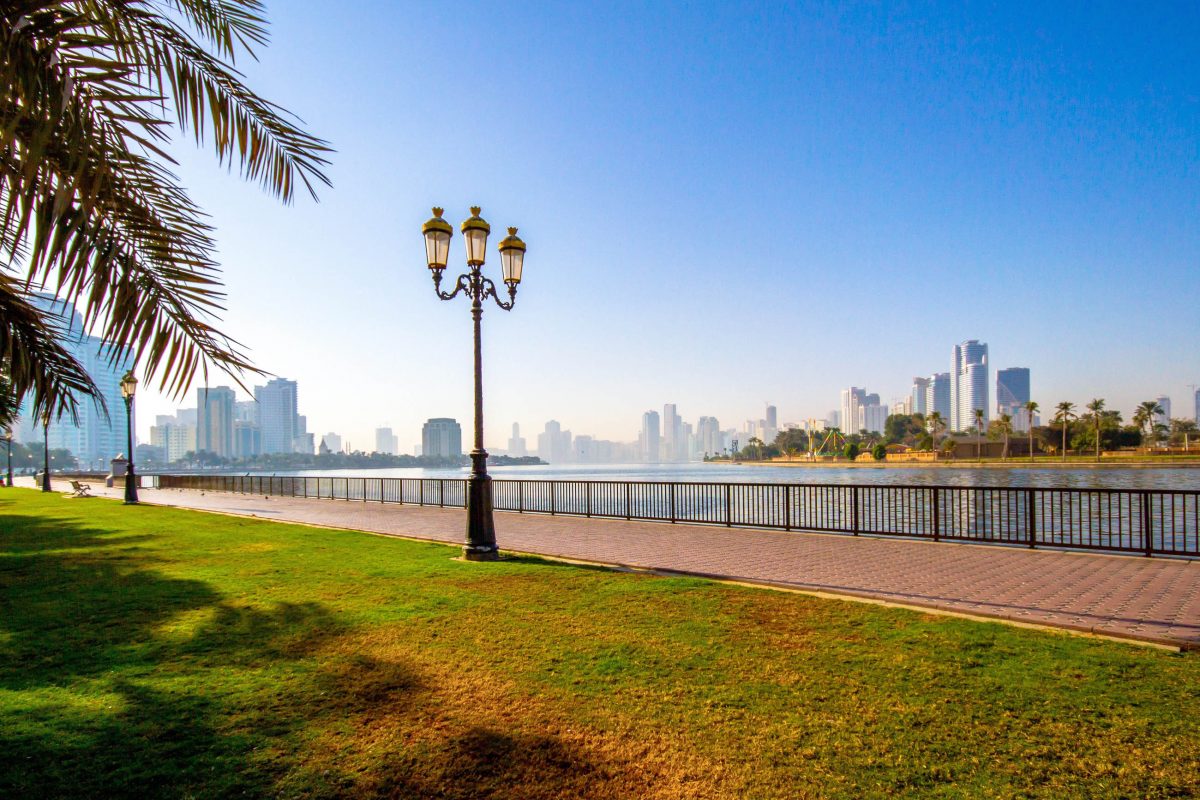
Entlang der Altstadt, der Art und der Heritage Area erstreckt sich mit der Corniche die Uferpromenade von Sharjah. Hier, am weitläufigen Sandstrand, sind die größten und besten Hotels von Sharjah zu finden.
Im Gegensatz zu den touristischeren Emiraten wohnt man als Urlauber in Sharjah hauptsächlich in vergleichsweise leistbaren Mittelklasse-Hotels. Diese stehen den 5-Sterne-Luxustempeln Emirates Palace Hotel, Atlantis oder Burj Al Arab in punkto Service jedoch kaum nach. Es fehlen lediglich Protz und Prunk, sowie die oft gewaltige Auswahl an Zusatzangeboten.
An der Corniche, gleich neben dem Radisson Blu Hotel liegt auch der Palast des amtierenden Herrschers von Sharjah. Das gewaltige Gebäude an der Creekmündung ist allerdings durch hohe Mauern gut vor fremden Blicken geschützt.
Zum Baden ist der östliche Sandstrand an der Khaleed-Lagune entlang der Promenade nach Ajman am schönsten. Der Rest des Strandes ist entweder Privateigentum der Hotels, oder anderweitig verbaut. Abkühlung bringt das rund 30°C warme Meer jedoch kaum.
Achtung Bikini-Verbot! Auch am Strand gelten vor allem für Frauen die Kleidungsvorschriften, Schultern und Knie bedeckt zu halten.
Museum für Islamische Zivilisation
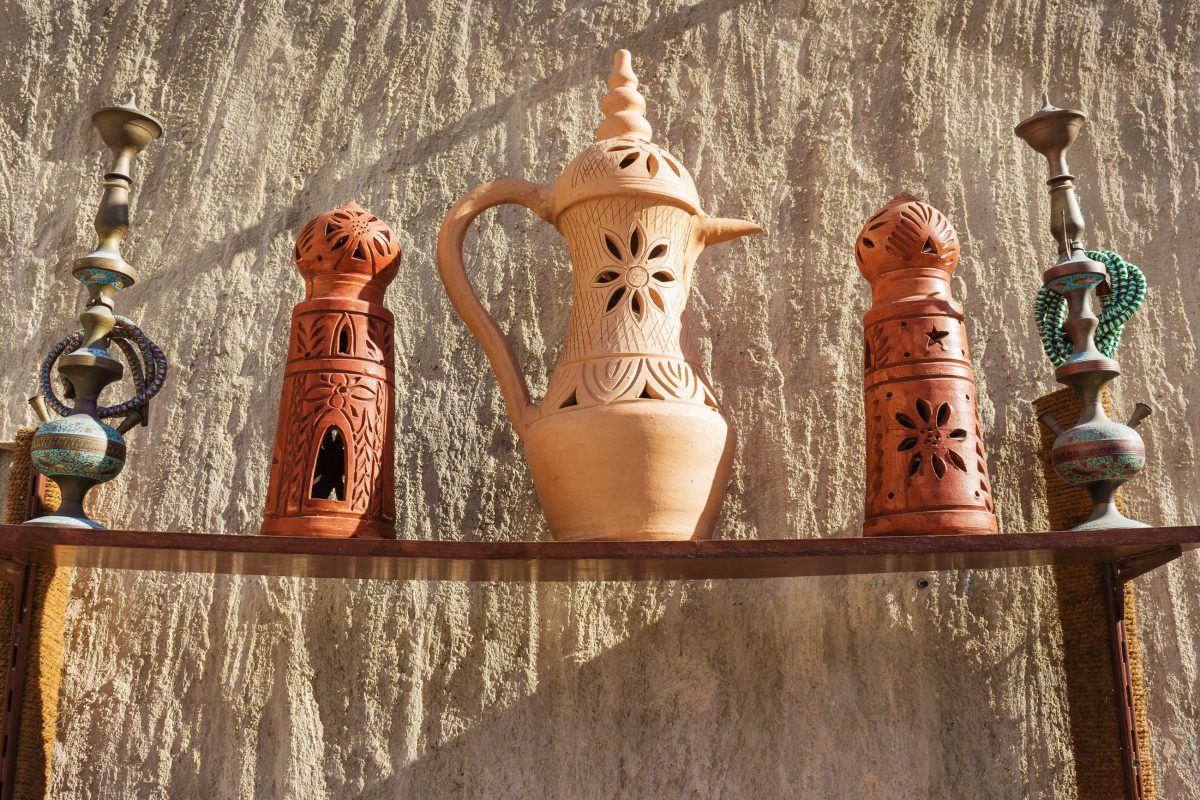
In der 200m langen Markthalle des ehemaligen Souq al-Majarrah an der Corniche von Sharjah wurde das Museum für Islamische Zivilisation eingerichtet. Die Errungenschaften der arabischen Welt in den Bereichen Astronomie, Geographie, Medizin und Mathematik, sowie die Geschichte des Islam und seiner Heiligtümer können unter seiner eindrucksvollen goldenen Kuppel nachvollzogen werden.
Art Area, Al Hisn Fort und Heritage Area
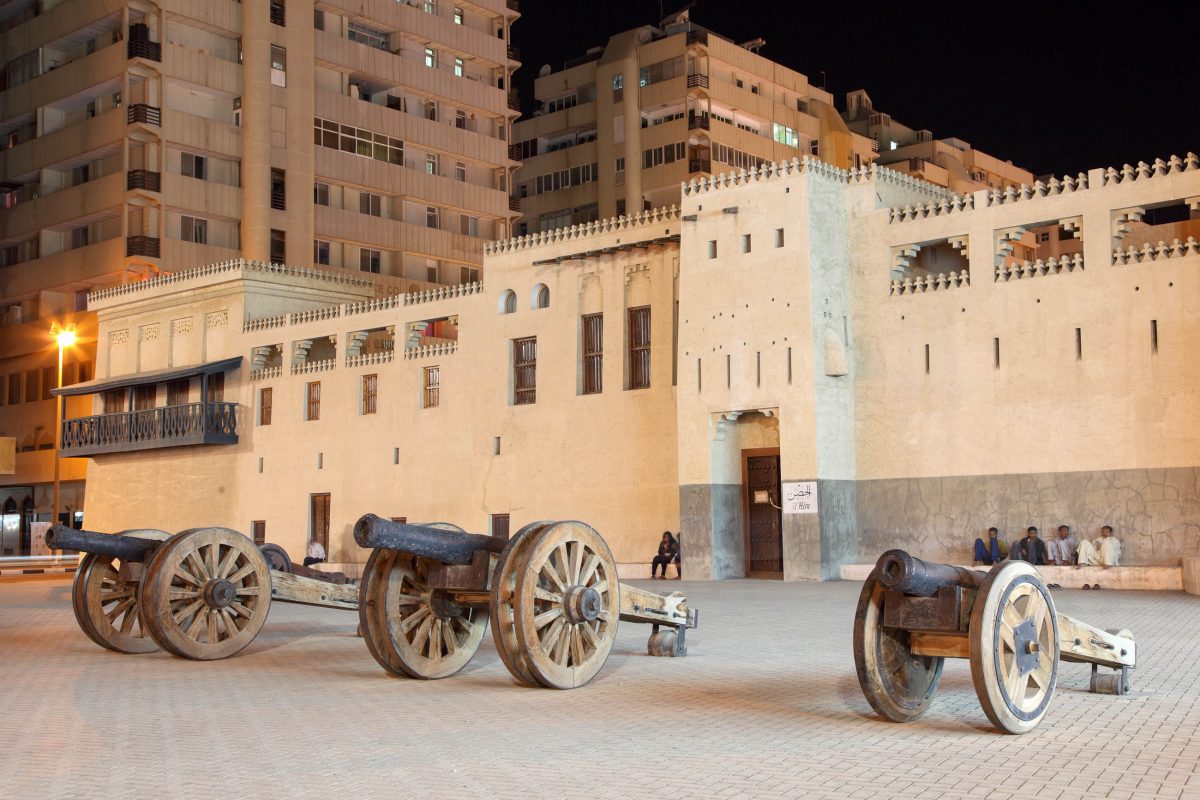
Sharjah verfügt über eine einzigartige Altstadt, die für viele als schönste der Vereinigten Arabischen Emirate gilt. Dem amtierenden Herrscher von Sharjah, Sheikh Dr. Sultan bin Mohammed al-Quasimi, ist es zu verdanken, dass die historischen Bauten bis heute bestehen blieben.
Um die alte Kultur zu bewahren ließ er die Altstadt von Sharjah umfassend restaurieren und schuf an der Corniche von Sharjah das Kunstzentrum der Art Area und die auf Volkskunde fokussierte Heritage Area. Zum Teil wurden die alten Herrenhäuser zu Museen, doch einige von ihnen sind immer noch von Privatfamilien bewohnt. In ihrem Zentrum erhebt sich als touristisches Herz der Stadt, mit dem Fort al-Hisn die historische Festung von Sharjah.
Nach der Heritage Area folgt entlang der Corniche die eindrucksvolle al-Zahra Moschee mit ihrem reich verzierten Eingangsportal.

König Faisal Moschee
Die König Faisal Moschee wurde 1987 als größte Moschee von Sharjah eröffnet und bietet Platz für 15.000 Gläubige. Sie war ein Geschenk des arabischen Herrschers König Faisal bin Abdul Aziz Al Saud. Ihre beiden schlanken Minarette ragen schräg gegenüber der Heritage Area in den Himmel.
Government House Square, Rolla Square und Kuwait Square

Nur einen Block nordöstlich von der King Faisal Moschee liegen drei sehenswerte Plätze von Sharjah: Der Government House Square mit einer Skulptur des Koran, der vom Regierungspalast und dem zentralen Postamt von Sharjah begrenzt wird, dem historisch bedeutenden Rolla Square und dem Kuwait Square.
Auf dem Rolla Square steht der so genannte Rolla-Baum, eine gewaltige Skulptur eines 200 Jahre alten Banyan-Baums, der den Baum des Lebens darstellen soll. Einst trafen sich die einflussreichen Familien der Emirate zu besonderen Anlässen unter diesem Rolla-Baum. Im Rahmen des Nationalfeiertags am 2. Dezember stellt er heute noch den Mittelpunkt von Veranstaltungen und Folklore-Aufführungen dar.
Der Kuwait Square ist über die Ibrahim Mohammed Al Medfa’a Straße mit dem Government House Square verbunden und ist dank des hoch aufragenden Kuwait-Denkmals schon von weitem sichtbar. Platz und Monument wurden am 25. Februar 1990 als Symbol der brüderlichen Beziehung zwischen den Vereinigten Arabischen Emiraten und Kuwait eingeweiht.
Tipp: Abseits der Lagunen ist Sharjah streng im Schachbrettmuster ausgerichtet, was an Kreuzungen oft zu Straßen-Verwechslungen führen kann. Die markanten Skulpturen auf den zahlreichen Plätzen und Kreisverkehren sind gute Orientierungspunkte.
Al Ittihad Park
Der Al-Ittihad Park gegenüber der König Faisal Moschee gehört mit seiner Fläche von über 60.000 Quadratmetern zu den größten Plätzen von Sharjah. Hier steht inmitten von Grünflächen die siebenarmige Al-Ittihad-Skulptur, die mit Austern und Perlen die Einheit der sieben Vereinigten Arabischen Emirate symbolisiert.
Souq Al Markazi (Blue Souq)
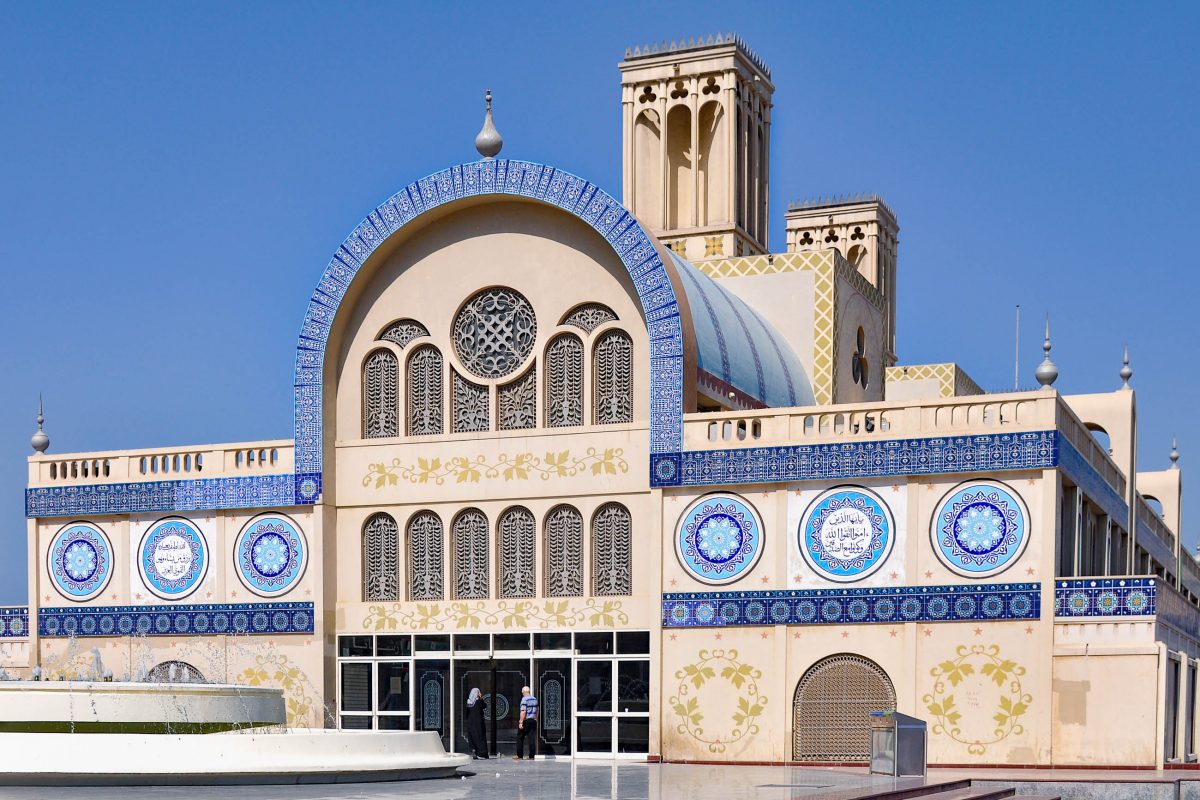
Wer an Shoppen in Sharjah denkt (und das auch noch zu günstigen Preisen), meint in den meisten Fällen den Souq Al-Markazi („Zentralmarkt“). Die gewaltige Markthalle des Blue Souq wird auch Central Souq oder Gold Souq genannt.
Sie ist der größte Markt der Stadt, bedeutende Sehenswürdigkeit von Sharjah und einer der schönsten neoarabischen Bauten der Welt. Im Inneren feilschen auf zwei Stockwerken und einer Gesamtfläche von 80.000 Quadratmeter über 600 Shops um Kunden.
Rund um die Al Khaleed Lagune

Hinter dem Al Markazi Souq lohnt es sich, an der Al Khaleed Lagune entlang zu spazieren. Richtung Norden, neben dem Blue Souq, liegt der Fisch- und Gemüsemarkt von Sharjah. Zwischen den beiden Markthallen zaubert der blumenbestandene „Smile You’re in Sharjah“-Kreisverkehr jedem Passanten ein Lächeln auf die Lippen.
Vom Ufer aus fällt der Blick auf die am 02.12.2012 eingeweihte Flaggen-Insel, die neben einem Vergnügungs- und Aquapark auch einen der höchsten Fahnenmasten der Welt beherbergt. Die 15x30m hohe Flagge der VAE weht hier in 123 Metern Höhe.
Tipp: Das schwimmende Sharjah Dhow Restaurant ist die perfekte Adresse für ein romantisches Abendessen mit unvergesslicher Kulisse.
Bei der nächsten Insel weiter südlich liegt die prächtige an-Nur Moschee, die als schönste Moschee von Sharjah gilt und als einzige der rund 300 Moscheen in Sharjah auch besichtigt werden kann.
Am Scheitelpunkt der Al-Khaleed Lagune sorgt der malerische Al Majaz Park mit seinen Grünflächen und der Al Taqwa Moschee für erholsame Spaziergänge. Wieder nach Norden, am Hilton Sharjah vorbei, folgt die Al Majaz-Insel, auf der 2014, als Sharjah zur islamischen Kulturhauptstadt ernannt wurde, ein modernes Amphitheater nach römischem Vorbild errichtet wurde. Das 4500 Zuschauer fassende Theater ist das erste seiner Art in der Region.
Die Al Majaz Uferpromenade lädt mit Gärten, Cafés, Restaurants und Shops zum Flanieren und Verweilen ein. Hier treffen sich Touristen, Familien und Geschäftsleute am 100 mal 200 Meter messenden musikalischen Sharjah-Brunnen, dem markanten Wahrzeichen der Promenade.
Al Quasba-Kanal

Entlang des 1km langen Al-Qasba-Kanals, der Wasserstraße von der Khalid-Lagune zur Al-Khan-Lagune und schönster Flaniermeile der Stadt, sorgen französische Bistros und italienische Cafés für europäisches Flair. Gewaltiger Hingucker ist das 60m hohe Riesenrad „Eye of the Emirates“, welches einen fantastischen Rundblick über Sharjah bietet.
Maraya Art Center
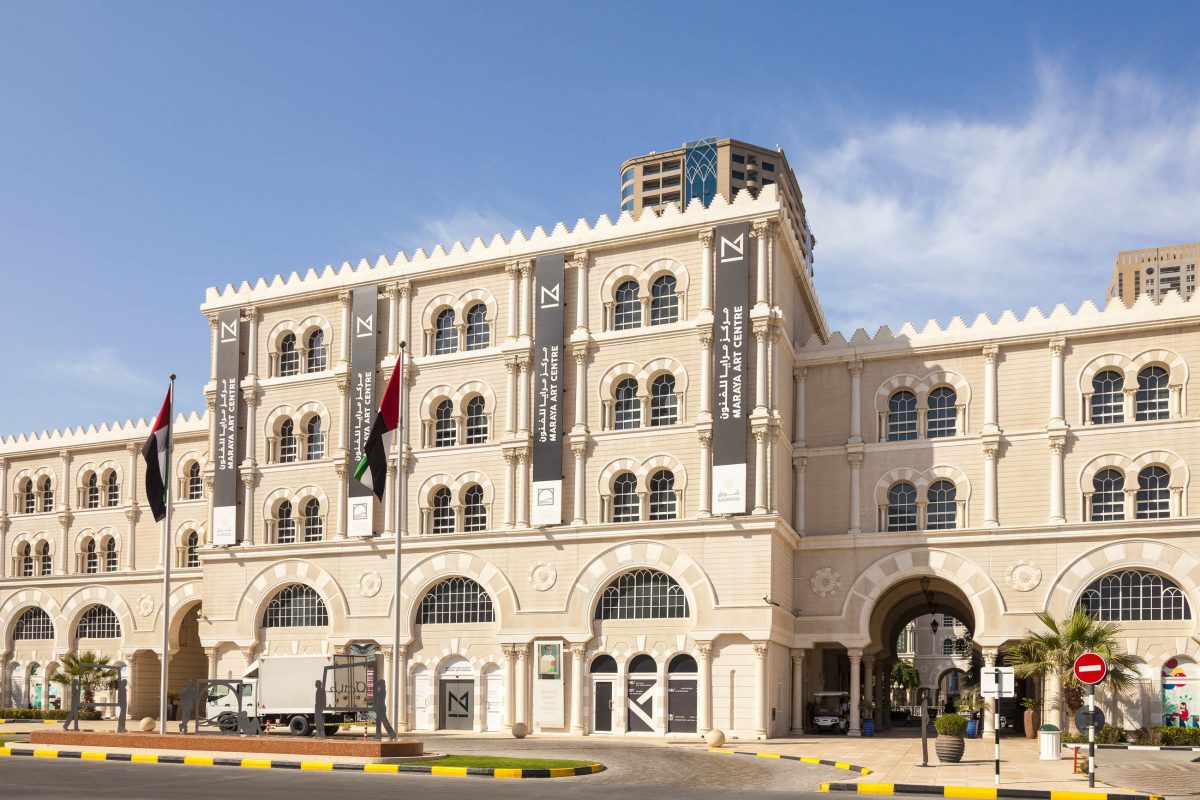
Direkt am al-Qasba Kanal liegt auch das Maraya Art Center. Es präsentiert einerseits zeitgenössische Kunst der arabischen Welt und fungiert andererseits als Veranstaltungsort und Austauschplattform für aufstrebende Künstler. Auf zwei Stockwerken und im Maraya Art Park außerhalb des Gebäudes laden zeitgenössische Kunstwerke aller Art zum Flanieren, Entdecken und Staunen ein.
Maritimes Museum
Als einst bedeutende Seemacht darf ein Seefahrer-Museum in Sharjah natürlich nicht fehlen. Es informiert seine Besucher lebendig und interaktiv über die maritimen Traditionen von Sharjah, darunter Schiffbau, Fischerei, Perlentauchen und Seehandel.
Sharjah Aquarium
Passend zur Seefahrt liegt gleich neben dem Maritimen Museum das Aquarium von Sharjah. Etwa 250 verschiedene Spezies werden hier gezeigt, womit seine Größenverhältnisse keinen Vergleich zum nicht weit entfernten und um einiges spektakuläreren Dubai Aquarium darstellen.
Sharjah Nationalpark
Etwas außerhalb von Sharjah-Stadt, in der Nähe des Flughafens, liegt mit dem Sharjah Nationalpark die größte Parkanlage des Emirates. Das 600.000 Quadratmeter messende Areal ist Picknick- und Grillplätzen, Radwegen und einer Miniatur-Darstellung von Sharjah-Stadt inklusive Mini-Lagunen ein beliebtes Tagesausflugsziel der Einheimischen.
Arabian Wildlife Center
Ebenfalls in der Nähe des Flughafens, im weitläufigen Desert Park, liegt der einzige Zoo der Vereinigten Arabischen Emirate. Rund 100 verschiedene Tierarten der Arabischen Halbinsel sind im 1999 eröffneten Tierpark von Sharjah zu sehen.
Weiterführende Links:
Offizielle Tourismus-Website von Sharjah
Offizielle Website der Sharjah Biennale

